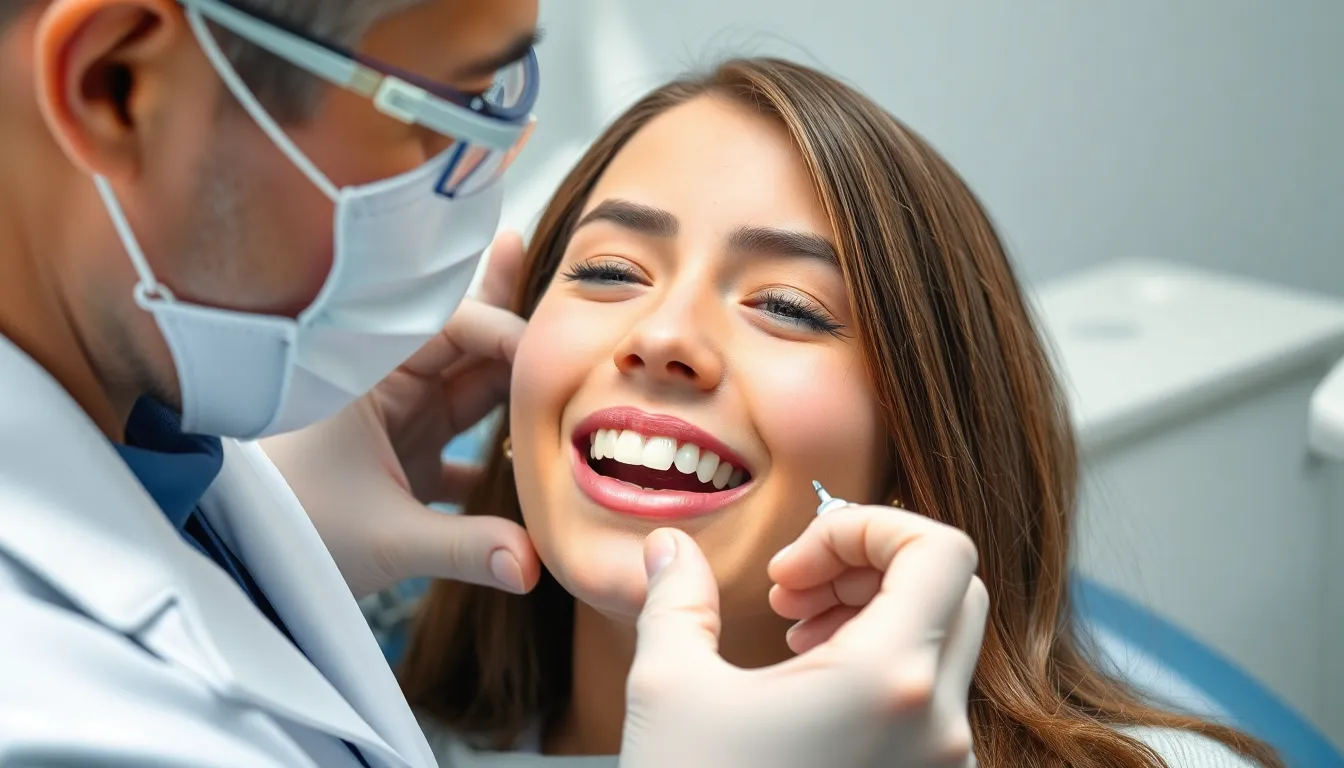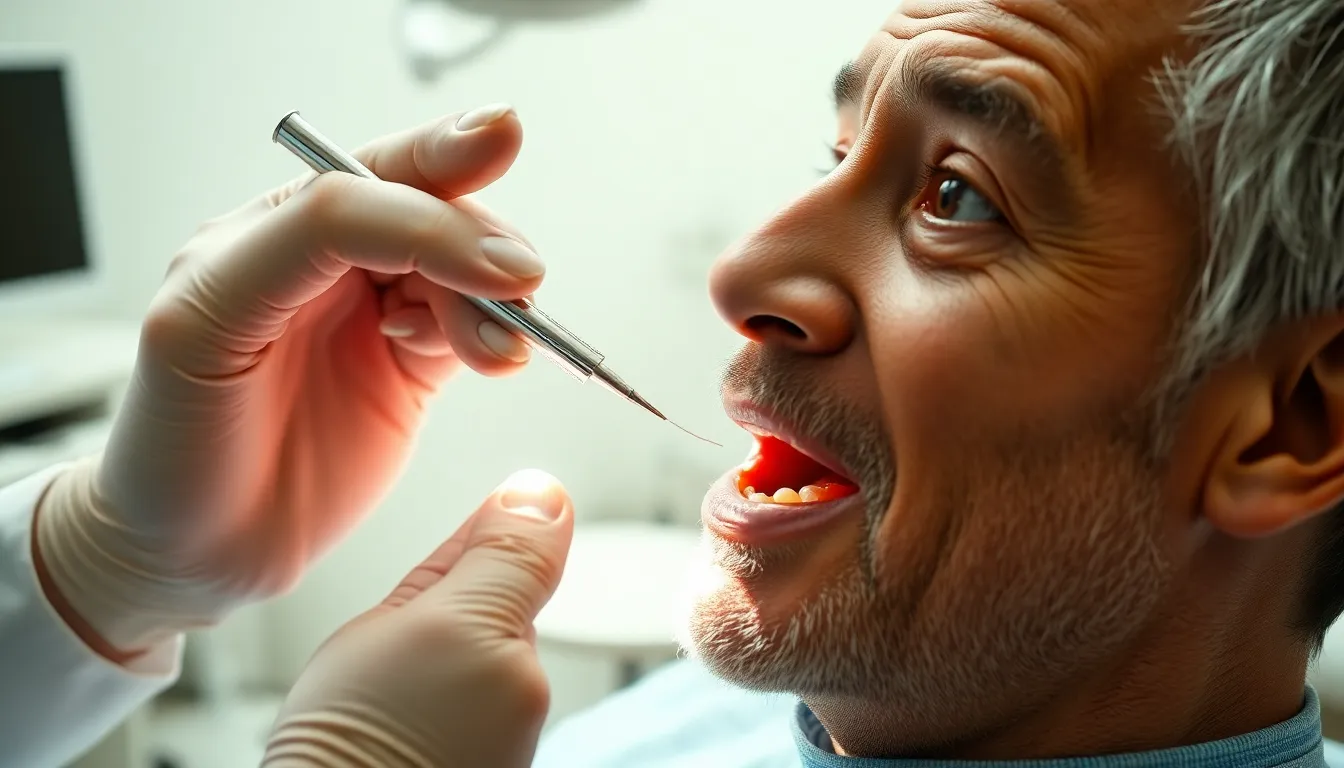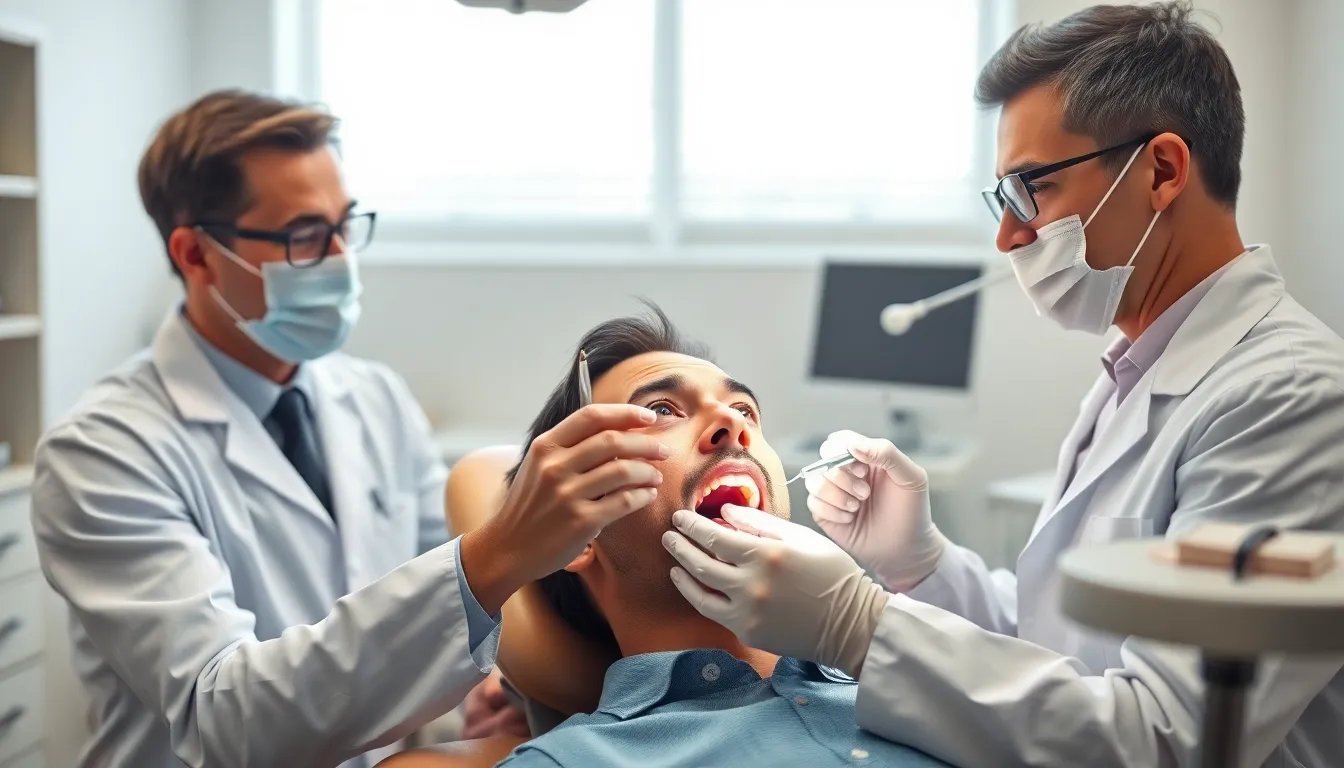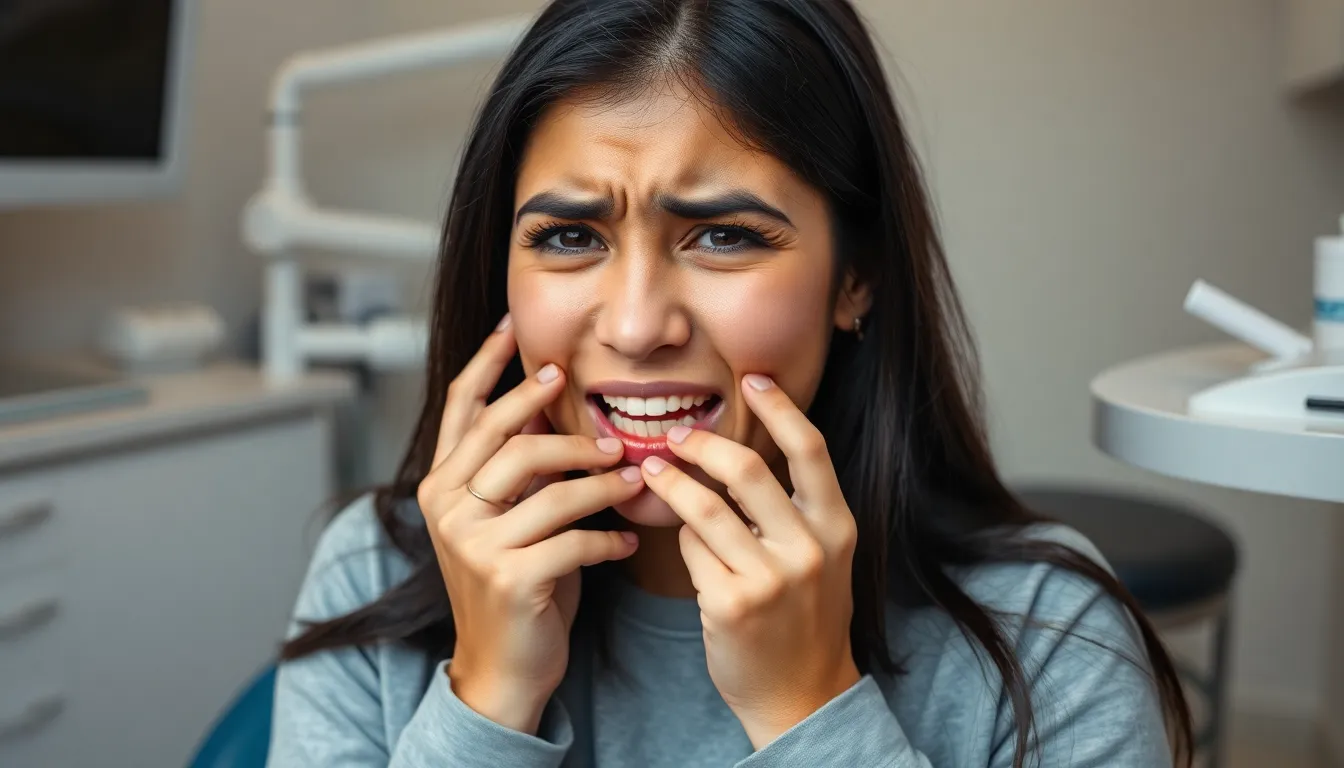Are canker sores from braces making your orthodontic journey more painful than it needs to be? These small, painful ulcers inside your mouth can turn the path to a perfect smile into an uncomfortable experience.
When metal brackets and wires rub against the delicate tissue of your cheeks and lips, they often create irritation that leads to these frustrating sores. You’re not alone in this struggle—many braces wearers deal with canker sores as their mouths adjust to orthodontic treatment. The good news is that with the right knowledge and preventive measures, you can minimize discomfort and continue your orthodontic treatment with less pain.
Understanding Canker Sores and Their Relationship to Braces
What Are Canker Sores?
Canker sores are small, shallow ulcers that appear in the mouth, specifically on the soft tissues like the inside of your lips, cheeks, or tongue. These painful lesions typically measure between 1-4mm in diameter and feature a white or yellowish center surrounded by a red border. Unlike cold sores, canker sores aren’t contagious and don’t form on the outside of your mouth.
Many patients describe canker sores as feeling like a burning or tingling sensation before they even become visible. Sarah, one of our teen patients, once told me, “I knew something was wrong when my cheek started feeling strange, and the next morning, I woke up with three painful spots right where my bracket was rubbing.”
How Braces Contribute to Canker Sore Formation
Braces create many opportunities for canker sores to develop through mechanical irritation. The metal brackets and wires constantly rub against the delicate tissues in your mouth, creating small abrasions that can develop into painful ulcers. This friction particularly affects areas like the inside of your cheeks and lips where contact with orthodontic appliances is most frequent.
Orthodontic wax can help, but it’s not always applied perfectly. Also, food particles trapped around braces create an environment where bacteria thrive, potentially triggering or worsening canker sores in sensitive individuals.
Common Triggers for Canker Sores During Orthodontic Treatment
Several factors increase your likelihood of developing canker sores while wearing braces:
- Physical trauma: Direct injury from sharp edges of brackets or wires
- Food sensitivity: Acidic or spicy foods that irritate existing abrasions
- Stress and hormonal changes: Often coincide with orthodontic appointments
- Nutritional deficiencies: Particularly vitamin B12, zinc, folate, and iron
- Poor oral hygiene: Allows bacteria to flourish around orthodontic appliances
Adjustment periods after tightening appointments create heightened sensitivity. Many patients report an increase in canker sores in the 48-72 hours following these visits.
Differentiating Between Canker Sores and Other Oral Lesions
Not every mouth sore during orthodontic treatment is a canker sore. Proper identification helps determine appropriate treatment. Canker sores differ from other common oral conditions in several ways:
| Condition | Appearance | Location | Contagious | Duration |
|---|---|---|---|---|
| Canker Sores | White/yellow center with red border | Inside mouth on soft tissues | No | 7-14 days |
| Cold Sores | Fluid-filled blisters that crust over | Outside mouth, often on lips | Yes (herpes virus) | 7-10 days |
| Oral Thrush | Creamy white lesions | Tongue, inner cheeks, roof of mouth | No (fungal infection) | Varies with treatment |
| Irritation Ulcers | Red, inflamed areas | Directly at point of bracket contact | No | Resolves with wax protection |
Common Causes of Canker Sores When Wearing Braces
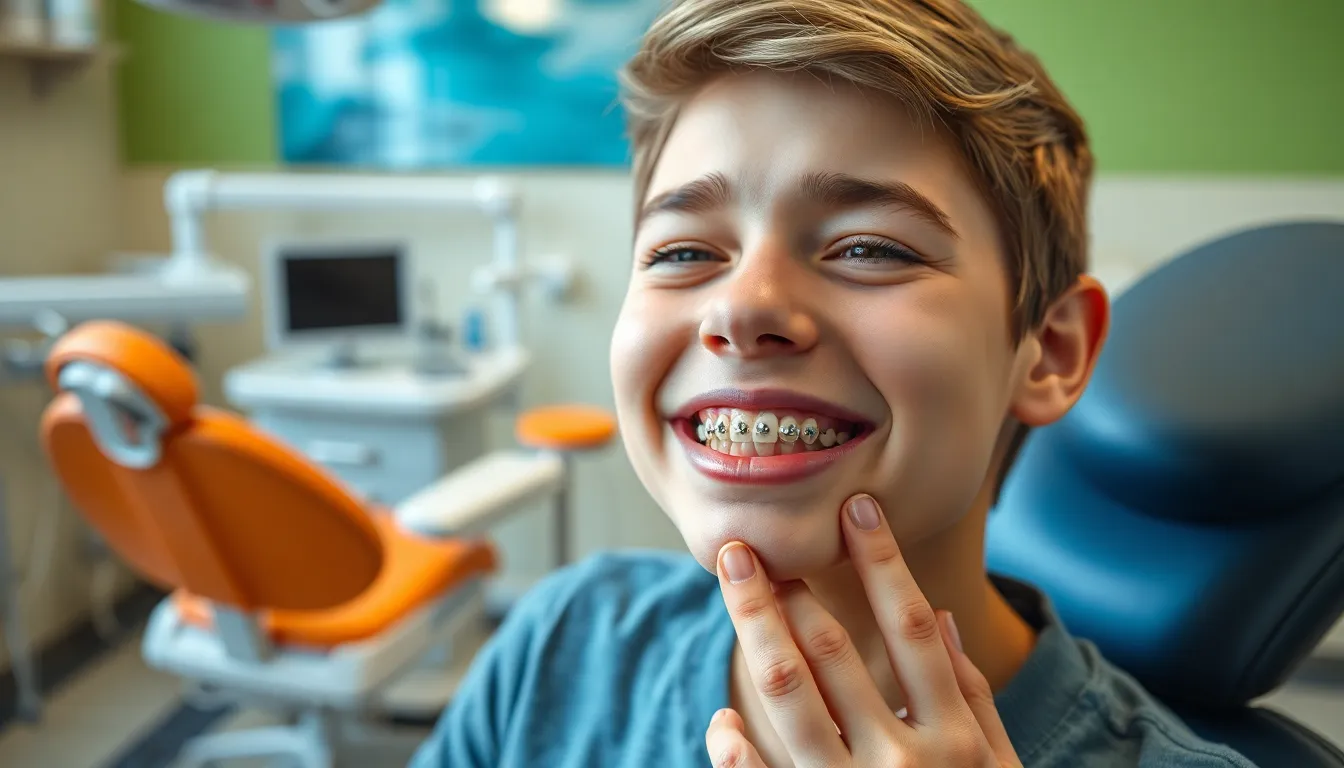
Canker sores frequently develop in patients wearing braces due to exact triggers that affect the mouth’s soft tissues. These painful ulcers can make your orthodontic journey uncomfortable but understanding their causes helps in prevention and management.
Physical Irritation From Brackets and Wires
Physical contact between your braces and mouth tissue is the primary trigger for canker sore development. Brackets, wires, and bands create continuous friction against your inner cheeks, lips, and tongue during everyday activities like eating or speaking. This mechanical irritation often results in small cuts or abrasions on the delicate soft tissues lining your mouth, which then develop into painful ulcers. The pressure exerted by braces to move teeth into alignment adds to this discomfort, particularly after adjustments when the tension is greatest. Repeated contact with the same irritated area prevents healing and can transform minor irritations into persistent canker sores.
Many patients report increased sore development during the first few weeks of treatment. Dr. Todd B. Harris notes, “I’ve observed that most patients experience fewer friction-related sores after the initial adjustment period as their oral tissues gradually toughen in response to the new appliances.”
Stress and Immune System Responses
Emotional factors play a important role in canker sore formation beyond the physical irritation of braces. Stress associated with orthodontic treatment can trigger or worsen canker sores by compromising your immune system function. Anxiety about appearance, discomfort from adjustments, or worry about treatment progress can elevate stress levels, making you more susceptible to developing mouth ulcers. Individuals with naturally sensitive oral tissues or a genetic predisposition to canker sores often experience more frequent and severe outbreaks during orthodontic treatment.
Your body’s immune response can also influence canker sore development. Some patients have an exaggerated immune reaction to minor irritations in the mouth, turning what would be a simple abrasion into an inflammatory response that creates a canker sore. Nutritional deficiencies, particularly in vitamins B12, folate, iron, and zinc, can further weaken your immune system and increase vulnerability to these painful ulcers during orthodontic treatment.
Identifying Canker Sores vs. Other Mouth Sores
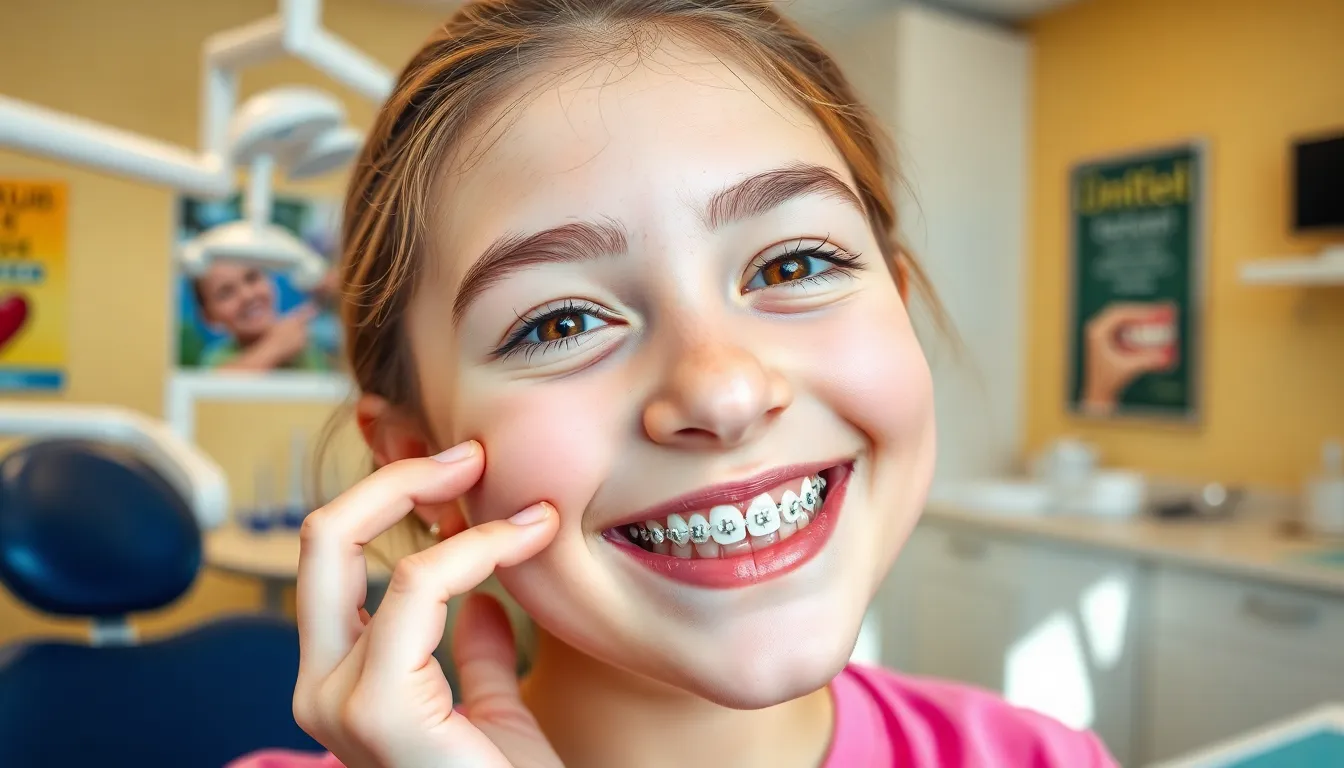
Canker sores appear as round or oval lesions with a white or gray center surrounded by a red border, typically located on the inner cheeks, lips, or tongue. These non-contagious ulcers cause a distinct tingling or burning sensation before fully developing into painful sores. Unlike other mouth sores, canker sores (aphthous ulcers) form exclusively on the movable soft tissues inside your mouth, never on the gums or roof of your mouth.
Cold sores differ significantly from canker sores in both cause and appearance. These fluid-filled blisters result from the herpes simplex virus, making them contagious, and they typically form on the outer lips or around the mouth rather than inside it. Cold sores often begin with itching or tingling before developing into clusters of small, painful blisters that eventually crust over.
Dr. Todd B. Harris notes, “Many of my patients with new braces confuse trauma-induced canker sores with cold sores. I always explain that if the sore is inside the mouth where the bracket rubs, it’s almost certainly a canker sore, not a viral infection.”
Traumatic ulcers might resemble canker sores but have a direct relationship to a exact injury. These sores develop immediately after biting your cheek or experiencing a sharp food cut, whereas canker sores from braces typically form gradually as a response to ongoing friction. Traumatic ulcers usually have irregular shapes that match the injury pattern, while canker sores maintain their characteristic round or oval appearance.
Fungal infections such as oral thrush create white, creamy lesions that can be wiped away, leaving raw, red areas underneath. Thrush typically covers larger areas of the mouth rather than forming discrete sores, and it’s often accompanied by a cotton-like feeling in your mouth. Canker sores, by comparison, can’t be wiped away and remain firmly in place until they heal naturally within approximately two weeks.
Here’s a comparison of different mouth sores you might experience with braces:
| Characteristic | Canker Sores | Cold Sores | Traumatic Ulcers | Oral Thrush |
|---|---|---|---|---|
| Location | Inside mouth on soft tissues | On or around lips | Site of injury inside mouth | Throughout mouth, often on tongue |
| Appearance | Round/oval with white center and red border | Cluster of fluid-filled blisters | Irregular shape matching injury | Creamy white patches that can be wiped off |
| Contagious | No | Yes | No | No, but indicates fungal infection |
| Pain Level | Moderate to severe | Moderate to severe | Severe initially, diminishes quickly | Mild discomfort to moderate pain |
| Healing Time | 7-14 days | 7-10 days | 3-7 days | Requires antifungal treatment |
| Relation to Braces | Common due to friction | Not related to braces | Common from brackets cutting tissue | Rare, but possible with poor hygiene |
Sarah, a 15-year-old patient wearing braces for six months, shared: “I kept getting what I thought were cold sores and was worried about infecting my friends. My orthodontist showed me the difference—my sores were actually canker sores from my braces rubbing against my cheek. Once I started using orthodontic wax, they decreased dramatically.”
Understanding these differences helps you identify the exact type of mouth sore you’re experiencing, ensuring you apply the appropriate treatment and take relevant preventive measures during your orthodontic journey.
Effective Treatments for Braces-Related Canker Sores
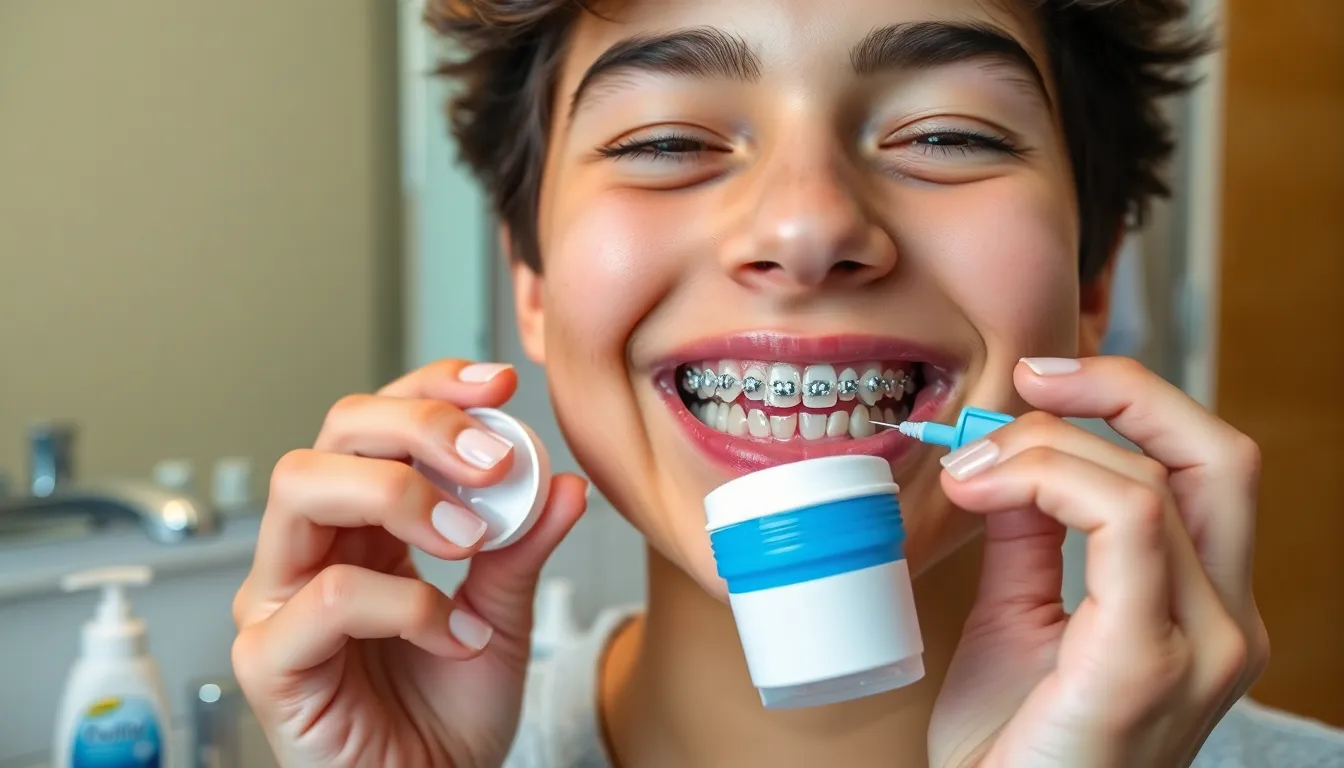
Canker sores from braces can be managed effectively with various treatment options that address both pain and healing. These treatments range from simple at-home remedies to more advanced prescription answers for persistent cases.
Over-the-Counter Answers
Orthodontic wax serves as your first line of defense against canker sores, creating a protective barrier between sharp bracket edges and your sensitive oral tissues. Apply a small amount directly to any protruding wires or brackets that rub against your cheeks or lips to prevent further irritation. Topical anesthetics containing benzocaine or lidocaine provide temporary relief by numbing the affected area, making eating and speaking more comfortable during healing. Antiseptic mouth rinses containing ingredients like hydrogen peroxide or chlorhexidine help reduce bacteria around the sore, preventing secondary infections and promoting faster healing.
Maintaining excellent oral hygiene through regular brushing and flossing removes food particles that could aggravate existing sores or create new ones. Many patients find salt water rinses (1/2 teaspoon of salt in 8 ounces of warm water) particularly soothing and cleansing for irritated tissues.
Sarah, one of Dr. Harris’s patients, shares: “During my first month with braces, I developed several painful canker sores. Using orthodontic wax on my brackets and an over-the-counter numbing gel made a huge difference. By the second adjustment appointment, I barely had any sores at all.”
Prescription Options for Severe Cases
Steroid mouth rinses prescribed by your orthodontist reduce inflammation quickly in cases where multiple or large canker sores develop. These medications target the immune response causing the inflammation, significantly shortening healing time from weeks to days. Prescription-strength topical treatments containing more potent anesthetics or antimicrobial agents offer enhanced relief compared to their over-the-counter counterparts.
Nutritional supplements may be recommended if blood tests reveal deficiencies contributing to recurrent sores. Vitamin B12, zinc, and folate supplements have shown effectiveness in reducing canker sore frequency in patients with documented deficiencies. Systemic medications like colchicine or pentoxifylline might be prescribed in rare cases of severe, recurring ulcers that significantly interfere with orthodontic treatment.
Prevention Strategies to Avoid Canker Sores With Braces
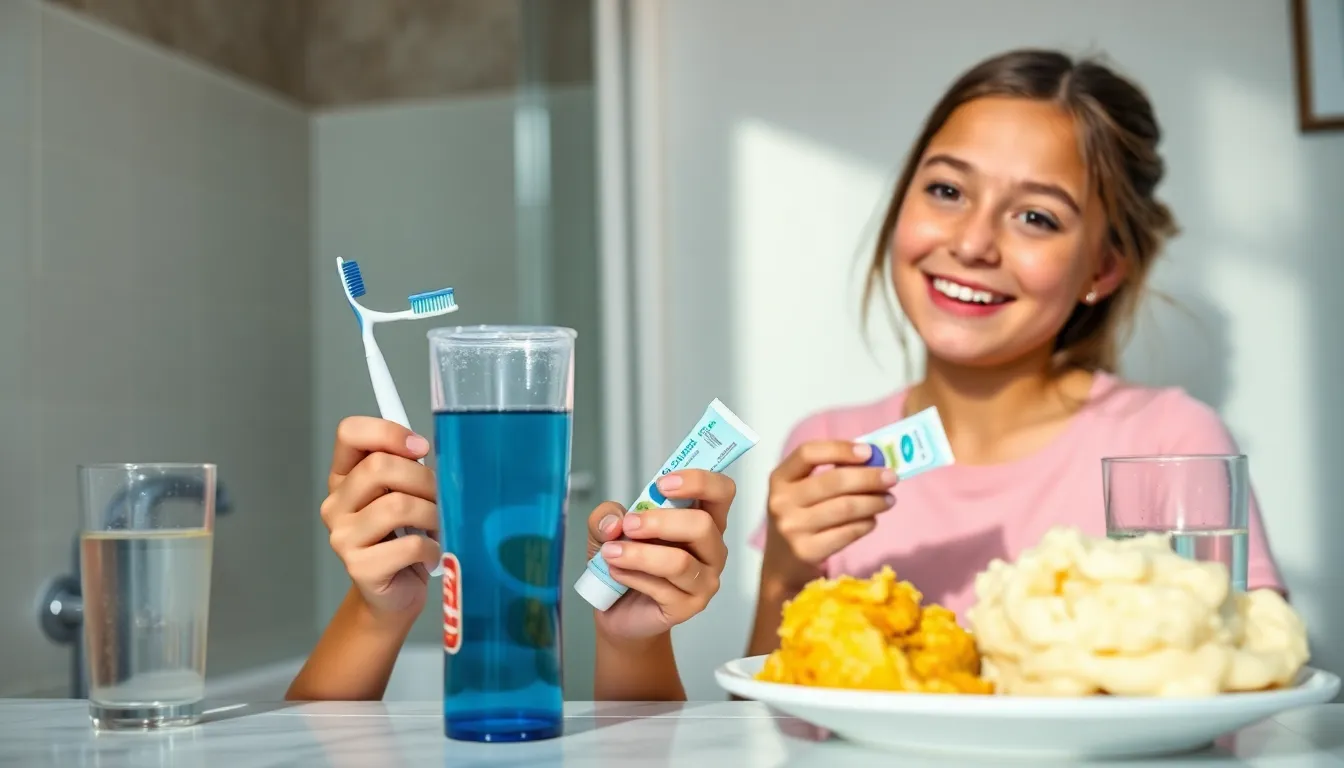
Preventing canker sores while wearing braces requires proactive measures to minimize irritation in your mouth. You’ll find that creating barriers between your braces and soft tissues, along with making exact lifestyle adjustments, can significantly reduce your risk of developing painful ulcers.
Proper Oral Hygiene Techniques
Maintaining meticulous oral hygiene forms the foundation of canker sore prevention with braces. Brush gently with a soft-bristled toothbrush to avoid traumatizing the sensitive tissues in your mouth while still removing food particles and bacteria that could cause irritation. Avoid toothpastes containing sodium lauryl sulfate, as this ingredient has been linked to increased canker sore occurrence in many orthodontic patients.
Flossing becomes even more crucial with braces to remove trapped food that can irritate your mouth and lead to sores. Rinsing your mouth regularly with salt water creates a healing environment that soothes irritated tissues and helps prevent infection in any small abrasions before they develop into full-blown canker sores.
Staying hydrated throughout the day keeps your mouth from becoming dry, which can exacerbate irritation from your braces. Dr. Harris notes, “Many of my patients who increase their water intake report fewer instances of canker sores, as proper hydration helps maintain the protective qualities of saliva that coat the oral tissues.”
Orthodontic wax serves as your first line of defense against canker sores. Apply it to brackets and wires that cause irritation, creating a smooth barrier between your braces and the inner surfaces of your cheeks and lips. This simple step can prevent the friction that commonly triggers canker sores in braces wearers.
Dietary Adjustments That Help
Modifying your diet plays a important role in preventing canker sores while wearing braces. Focus on consuming soft, bland foods that don’t require excessive chewing, particularly after adjustments when your mouth is most sensitive. Foods like yogurt, mashed potatoes, and smoothies provide nutrition without aggravating sore spots.
Avoid acidic foods and beverages such as citrus fruits, tomatoes, and sodas that can burn already irritated tissues and trigger new sores. Spicy foods similarly can exacerbate existing irritation and should be limited during orthodontic treatment.
Crunchy, rough-textured foods pose a double threat – they can damage your braces and create small cuts in your mouth that develop into canker sores. Instead, opt for softer alternatives that provide similar nutritional benefits without the risk.
Ensuring adequate intake of essential nutrients supports your body’s ability to resist and heal mouth sores. Vitamin B12, iron, and folate deficiencies have been linked to increased canker sore susceptibility, making a balanced diet particularly important during orthodontic treatment.
“I struggled with constant canker sores during my first month with braces until my orthodontist suggested I start taking a vitamin B complex supplement and use orthodontic wax religiously,” shares Monica, a 16-year-old patient. “Within two weeks, I noticed a dramatic difference – I could finally focus on school instead of the pain in my mouth.”
Stress management techniques such as regular exercise, adequate sleep, and mindfulness practices can also help reduce canker sore occurrences. Many patients report more frequent outbreaks during particularly stressful periods, highlighting the connection between emotional well-being and oral health while wearing braces.
When to See Your Orthodontist or Dentist
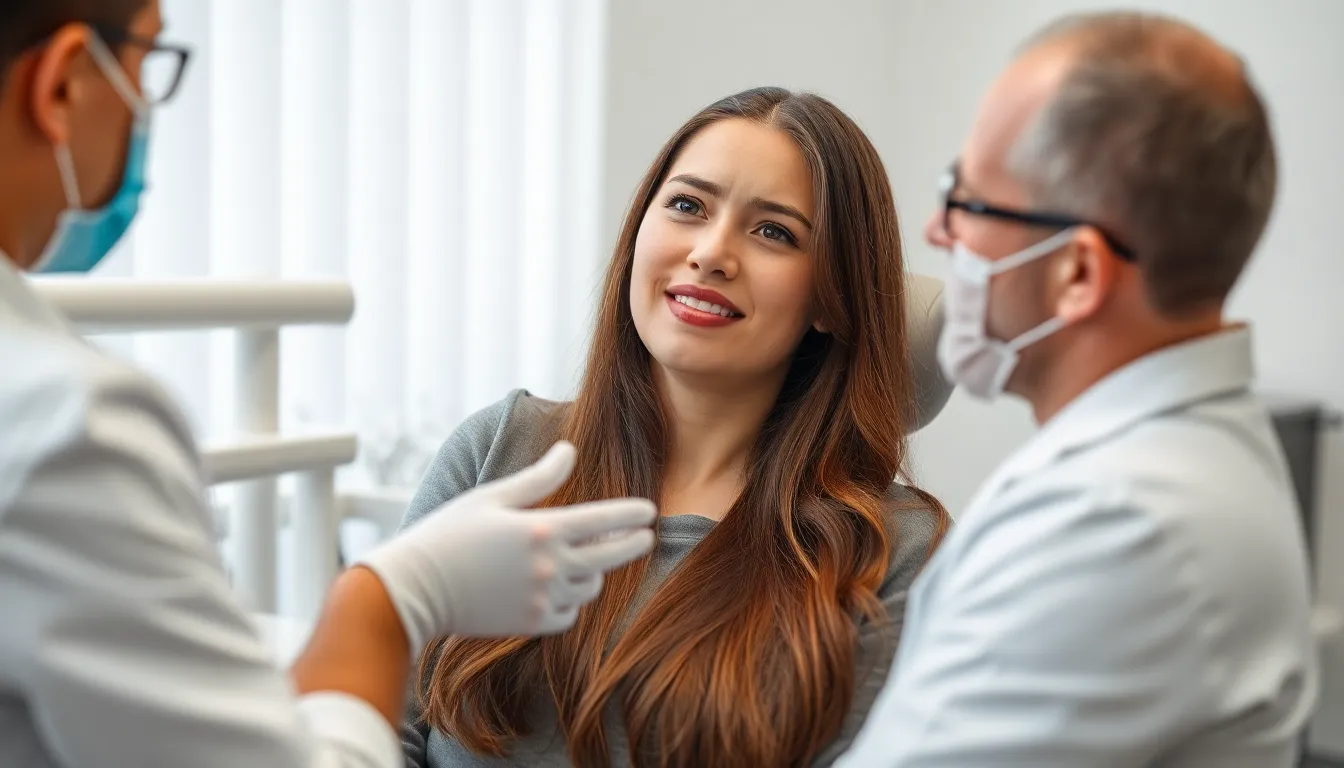
Knowing when to seek professional help for canker sores during your orthodontic treatment can prevent unnecessary discomfort and complications. Contact your orthodontist or dentist if your canker sores don’t heal within two weeks, as this could indicate a more serious issue requiring medical attention. Persistent sores that last longer than the typical 10-14 day healing period may need professional evaluation to rule out infection or other underlying conditions.
Schedule an appointment immediately if your sores become increasingly painful or show signs of infection such as increased redness, swelling, or discharge. Recurring or unusually large canker sores also warrant professional attention, as they might indicate an underlying health issue that needs addressing beyond your orthodontic treatment. Pain that significantly interferes with eating, speaking, or completing daily activities is another clear signal to consult your dental professional.
Common indicators that professional care is needed:
- Sores lasting longer than two weeks without improvement
- Severe pain that doesn’t respond to over-the-counter treatments
- Signs of infection including pus, increased swelling, or fever
- Multiple sores appearing simultaneously or in quick succession
- Difficulty eating or drinking due to pain severity
- Sores larger than 1 cm in diameter
Dr. Todd B. Harris notes, “Many patients try to tough it out with canker sores, but there’s no reason to suffer in silence. If home remedies aren’t providing relief after several days, we have additional treatment options that can significantly reduce healing time and discomfort.”
One patient, Sarah, shared her experience: “I ignored a particularly painful canker sore for almost three weeks, thinking it was just part of having braces. When I finally saw my orthodontist, he identified an infection that required antibiotics. Now I don’t hesitate to call when a sore doesn’t improve after a week or feels different from the usual irritation.”
Your orthodontist might recommend adjusting your braces if a particular bracket or wire is consistently causing irritation. They can also prescribe stronger medications than what’s available over the counter, including antimicrobial mouth rinses, topical corticosteroids, or prescription-strength pain relievers for severe cases.
Regular follow-up appointments with your orthodontist provide excellent opportunities to discuss any persistent oral discomfort you’re experiencing. These professionals can often spot potential problems before they become serious and offer preventive strategies customized to your exact situation.
Conclusion
Dealing with canker sores is an unfortunate but manageable part of your orthodontic journey. With the right preventive measures like orthodontic wax dental hygiene and dietary adjustments you can significantly reduce their occurrence and discomfort.
Remember that most canker sores heal on their own within 7-14 days. For persistent or severe cases don’t hesitate to reach out to your orthodontist who can offer specialized answers customized to your situation.
Your smile transformation is worth the temporary challenges braces present. By implementing these strategies you’ll be able to focus less on mouth discomfort and more on the beautiful results awaiting you at the end of your treatment.
Frequently Asked Questions
What causes canker sores when wearing braces?
Canker sores during orthodontic treatment are primarily caused by physical irritation from brackets and wires rubbing against the soft tissues in your mouth. Other triggers include stress related to treatment, food sensitivities, nutritional deficiencies (particularly vitamins B12, iron, and folate), and inadequate oral hygiene. The friction is typically worst after adjustment appointments when pressure is highest.
How can I tell the difference between a canker sore and a cold sore?
Canker sores appear as small, round ulcers with a white or yellowish center and red border on movable soft tissues inside your mouth. They are not contagious. Cold sores, however, are fluid-filled blisters caused by the herpes simplex virus, typically appearing on the outer lips or around the mouth. Cold sores are highly contagious and often begin with tingling before forming a blister.
What is the fastest way to heal a canker sore with braces?
Apply orthodontic wax to cover sharp brackets causing irritation. Use over-the-counter topical anesthetics or antiseptic mouth rinses to reduce pain and promote healing. Rinse with warm salt water several times daily. Maintain excellent oral hygiene but brush gently around sore areas. For severe cases, consult your orthodontist about prescription steroid rinses or stronger topical treatments.
Can I prevent canker sores while wearing braces?
Yes! Use orthodontic wax proactively on brackets and wires that might irritate your mouth. Maintain meticulous oral hygiene with a soft-bristled toothbrush and SLS-free toothpaste. Rinse with salt water regularly. Stay hydrated to maintain protective saliva. Avoid acidic, spicy, and rough-textured foods. Ensure adequate intake of nutrients, particularly B vitamins, iron, and folate. Practice stress-reduction techniques like exercise or mindfulness.
When should I see my orthodontist about canker sores?
Contact your orthodontist if canker sores don’t heal within two weeks, as this may indicate a more serious issue. Seek professional help immediately if you experience severe pain that interferes with eating or speaking, signs of infection (fever, swelling), unusually large sores, or frequent recurring sores. Regular follow-up appointments are also important to discuss any persistent discomfort.
Are canker sores from braces contagious?
No, canker sores are not contagious regardless of their cause. Unlike cold sores (caused by the herpes simplex virus), you cannot spread canker sores to other people through kissing, sharing utensils, or any other form of contact. This means family members and friends don’t need to worry about catching canker sores from someone with braces experiencing these ulcers.
How long do braces-related canker sores typically last?
Most canker sores from braces heal within 7-14 days without treatment. Minor sores may resolve in as little as 4-5 days with proper care. The healing time depends on the size and severity of the sore, your overall health, and whether you’ve addressed the source of irritation. Most patients find that their mouth becomes more resistant to developing sores after the initial few months of orthodontic treatment.
Will switching to clear aligners prevent canker sores?
Clear aligners like Invisalign typically cause fewer canker sores than traditional braces because they have no brackets or wires to create friction against soft tissues. However, some patients may still experience irritation from the edges of aligners. If you’re extremely prone to canker sores, discuss alternative orthodontic options with your provider to find the most comfortable solution for your specific situation.


